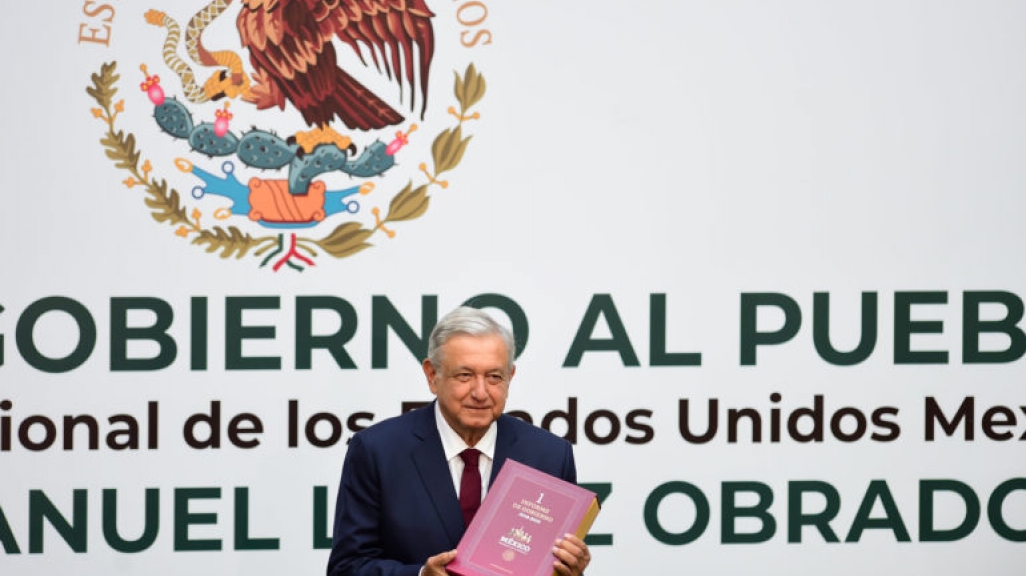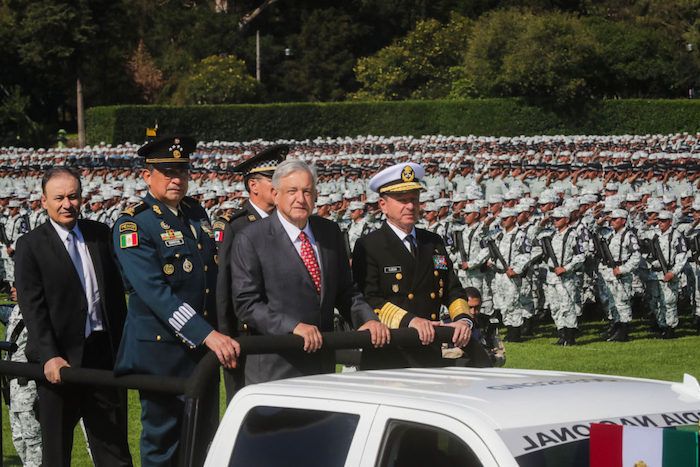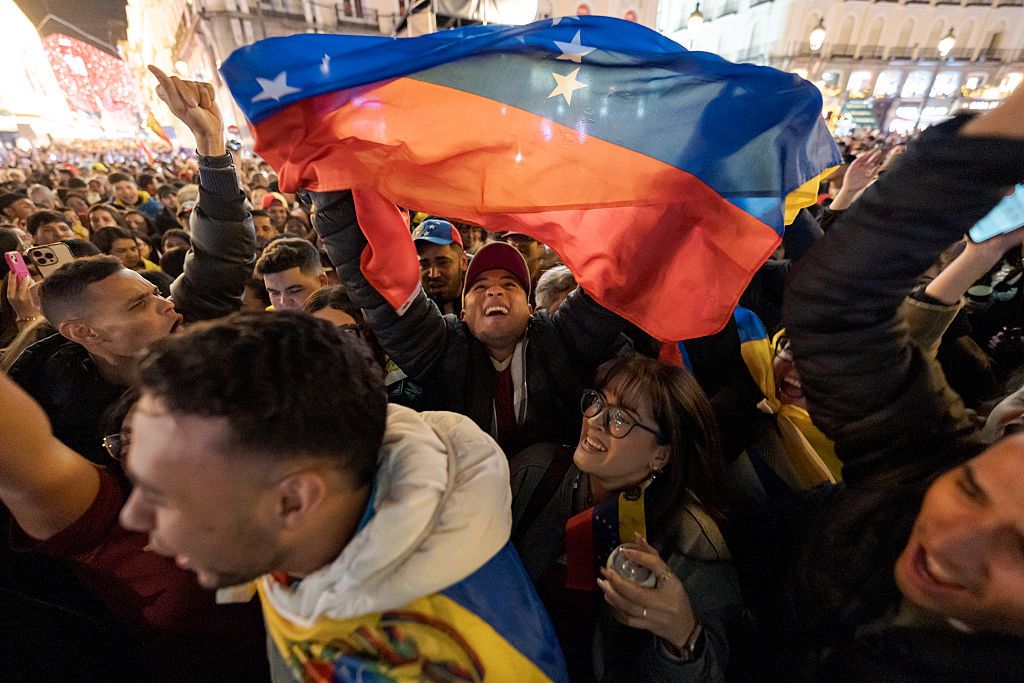Mexico: Takeaways from AMLO's First State of the Union
Mexico: Takeaways from AMLO's First State of the Union
From the economy to approval to foreign policy, where does Andrés Manuel López Obrador’s government stand as he delivers his primer informe?
Ten months into office, Andrés Manuel López Obrador gave his primer informe, or his first official state of the union address, from the National Palace on September 1, before Interior Secretary Olga Sánchez Cordero delivered the report to the opening session of Congress. Still, while it might have been his first keynote given to the government, the backdrop behind López Obrador, or AMLO, announced it was his third address to the people of Mexico, given prior informes when he hit his hundredth day in office in March and on the anniversary of his July 1 electoral win.
Here’s a look at takeaways from his September 1 speech, AMLO’s popularity, and his foreign policy stance.
Key points from the primer informe
The economy: Mexican presidencies generally witness an economic slowdown early in their six-year terms, or sexenios, and the trend continues under López Obrador. The economy contracted 0.3 percent in the first quarter of 2019 compared to the fourth quarter of 2018. Mexico avoided a recession when growth stagnated at 0 percent in the second quarter of this year. The Central Bank—which cut interest rates in August for the first time in five years and cautioned that the AMLO government’s policy steps hinder investment—forecasts 2019 GDP growth to hit between 0.2 and 0.7 percent, below the president’s pledge of 2 percent for the year.
In his remarks, AMLO rejected the “technocratic obsession of measuring everything according to simple economic growth,” instead emphasizing equitable distribution of wealth and “the happiness of the people.” As in past speeches, the president condemned the more than three decades of neoliberal policies that preceded his presidency. But he also said that ratification of the U.S.-Mexico-Canada Agreement by Washington’s Congress—where the pact remains stalled—will strengthen the Mexican economy, as well as that of North America overall.
The finance ministry presents the administration’s 2020 budget proposal to the lower house on September 8.
Corruption: After blaming the period of neoliberalism for unleashing an era of impunity, he highlighted his fight against fuel theft, known as huachicoleo, citing a decrease of 94 percent in this type of robbery that cost the federal government an estimated $3 billion in 2018. Animal Político, using data from state oil firm Pemex, charted a 20 percent year-on-year decline in incidents in both April and May, followed by a 0.3 percent decline in June.
The president pointed to his austerity measures as an indicator of transparency, giving examples such as prohibiting public servants from traveling on private flights and cutting pensions for ex-presidents, which AMLO has suggested amounted to as much as $10,000 a month. He also called on Congress to eliminate immunity, or fuero, for public servants.
Security: Mexicans say improving security is a bigger priority than either the economy or battling corruption, per polling firm Consulta Mitofsky. AMLO acknowledged that there is no good news yet when it comes to violence, given that there were more than 17,600 murders from January through June, marking the most murderous first half of the year on record for Mexico and a 4.4 percent increase over the same period in 2018. Femicides also keep climbing, with 448 in the first half of the year, up 9 percent over the same period last year and already higher than an entire year as recently as 2015.
AMLO described his creation of a National Guard, already a 58,600-strong force thus far dispatched to 150 areas nationwide and under civilian command, as a paradigm shift away from military enforcement. Some observers, however, say the guard represents ongoing militarization.
About those approval ratings
Early in his 90-minute speech, AMLO called on Congress to approve a constitutional reform allowing for a referendum roughly midway through his term in which voters could decide whether he should continue in the post. Although he originally pitched for the vote to take place on the same day as midterm elections—with the next ones slated for the summer of 2021—the opposition rejected that idea, and so AMLO proposed an earlier date of March 21, 2021.
Looking at his support levels, AMLO likely feels comfortable that the referendum would go his way. A series of polls released ahead of the primer informe shows his approval rating reaching as high as 71 percent. On the other hand, it’s less certain that his political party, MORENA, will sustain backing. Between February and August this year, the portion of Mexicans who self-identify as a morenistas dropped from 34 percent to 24 percent, per pollsters Buendía y Laredo. No other party exceeded 10 percent, while half of Mexicans self-identified as independents, up from 42 percent six months earlier.
The other question is how long the goodwill can last. Over the past three decades, other Mexican presidents had similar or higher approval ratings at this point in their sexenios. But thus far, Mexicans seem willing to give AMLO the benefit of the doubt: a July Parametría poll showed that 77 percent of respondents said the president needs more time in office before evaluation.
Where AMLO stands on foreign policy
While applauding the end of what he called the “opulence” of his predecessors, AMLO praised moves to cut back on officials’ “meaningless” foreign trips. He spoke of the closure of international trade and investment agency ProMéxico and 51 related offices worldwide, calling its existence “ridiculous” before adding there’s no such thing as a ProGermany, ProCanada, or ProFrance.
As previously covered, AMLO hasn’t left Mexico since September 2017 and he’s not breaking that two-year streak yet: Foreign Minister Marcelo Ebrard will represent him at the UN General Debate this month in New York. Ebrard, a former Mexico City mayor like the president, has been the face of Mexico abroad, attending the G20, traveling to El Paso last month after a mass shooting targeted Mexicans, and negotiating an exit to a June tariff threat by the White House. He heads to Washington again to meet with U.S. Secretary of State Mike Pompeo for a September 10 meeting on migration. Since implementing a program dubbed “Remain in Mexico” in January 2019, the United States has sent more than 35,000 mostly Central American asylum seekers back to Mexico to wait out their proceedings.










